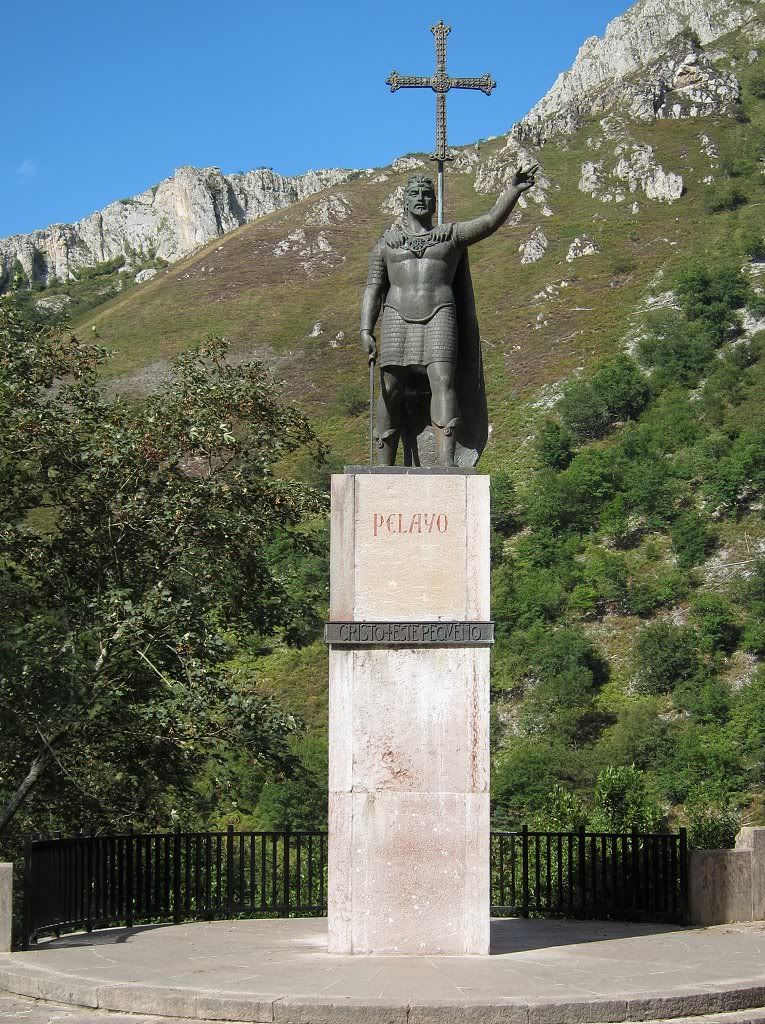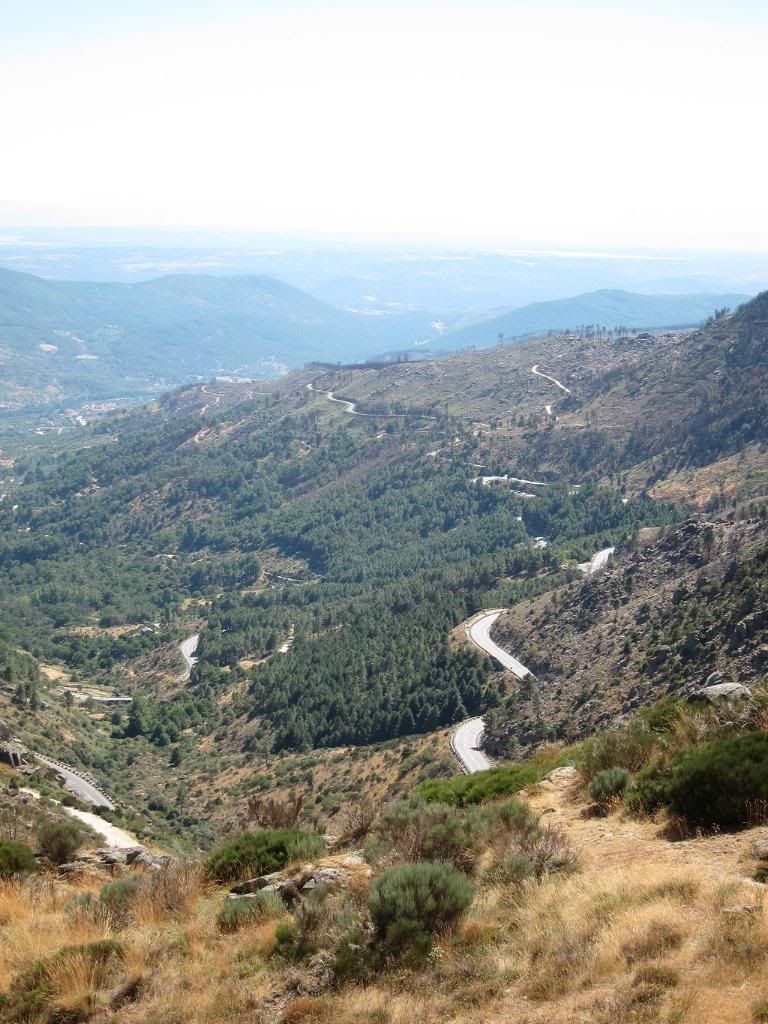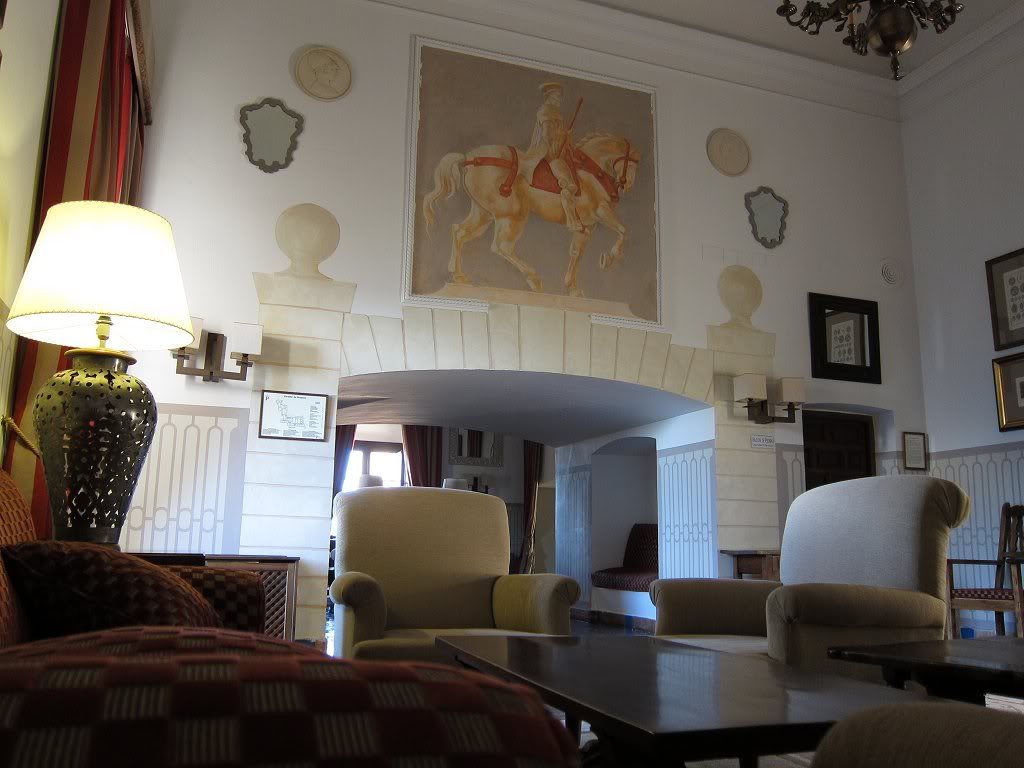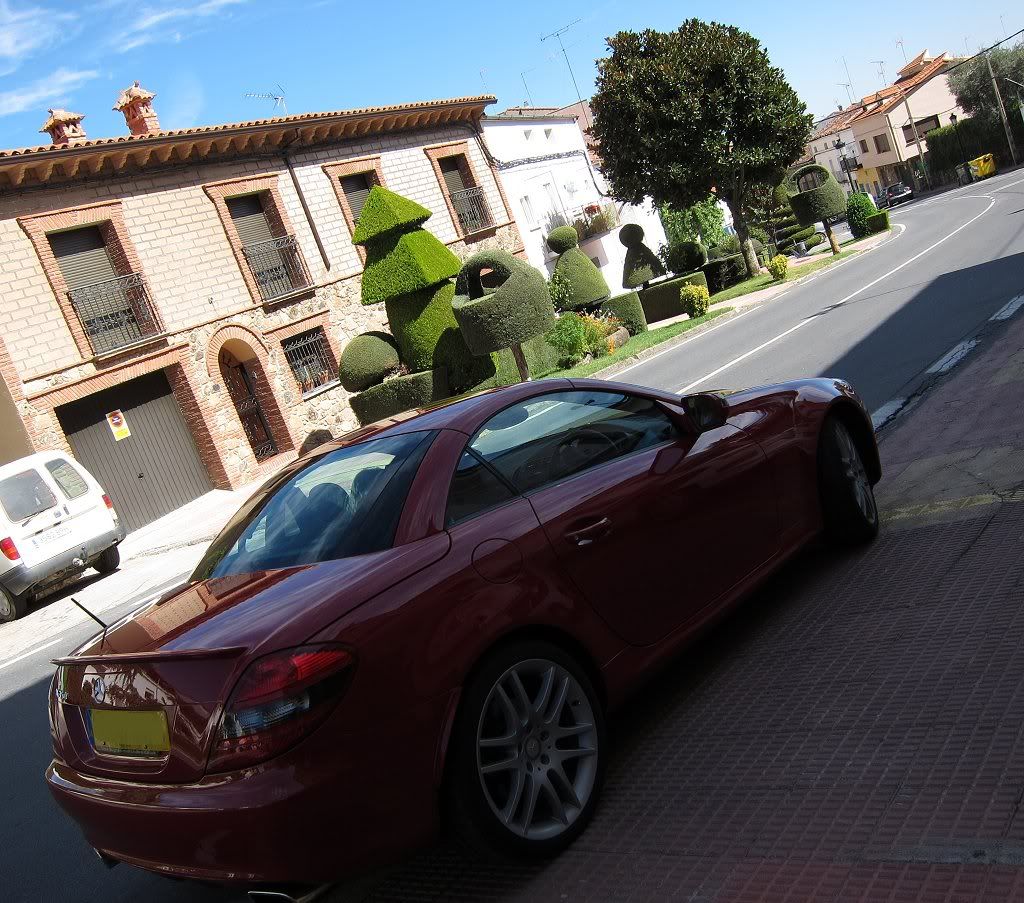- Joined
- Nov 6, 2007
- Messages
- 12,859
- Location
- North Oxfordshire
- Car
- His - Denim Blue A220 AMG Line Premium / Hers - Obsidian Black R172 SLK55
It seems like 2010 was the year for roadtrips to Spain what with ***, DRUK and Carnut13 all driving around the place. While Angie and I have toured Spain a few times on a motorcycle, September saw us do our first trip there on four wheels when we took her SLK over and toured around a few Paradores.
For those who haven’t heard of them, Paradores are a publicly-funded chain of luxury hotels dotted across Spain. Now, the thought of a nationalised (i.e. state-owned) hotel chain sounds like an anathema to most people in the UK and conjures up images of the dire railway hotels that used to be owned and operated by British Rail where staff disinterest and lack of service were their USP. Fortunately that image couldn’t be farther from the truth as far as Spain’s Paradores are concerned and the best way I could describe many of them is something along the lines of “luxury hotels meet English Heritage buildings”. Not a perfect analogy, but you get the idea.
Some in the UK think they were Franco’s idea, but they weren’t. While the chain expanded significantly from 40 to more than 80 establishments during Franco’s 1960’s tourist boom, Paradores were not Franco’s baby, pre-dating his rise to power by quite a few years. In fact the whole thing started in 1910 when hotels were practically non-existent in the country and the Spanish government gave Marqués de la Vega Inclán the project of creating a hotel network to provide accommodation for tourists and improve Spain’s international image. Things sometimes move slowly in Spain and it was some 16 years later before the first tangible results were seen when in 1926 De la Vega Inclán kicked off the construction of a hotel in the Gredos Mountains. King Alfonso XIII chose the location personally and work began in August that year on what was to become the Parador de Gredos, completing on the 9th of October 1928 with its inauguration by the King himself – hence the sign outside each Parador today: “Paradores Nacional de Turismo desde 1928”. A flurry of activity throughout the 1930’s saw a raft of monumental buildings converted into Paradores including Oropesa (1930), Úbeda (1930), Ciudad Rodrigo (1931) and Mérida (1933) but external events were to bring a halt to the rapid initial expansion.
During the bloody Civil War many of the buildings comprising the network were damaged or used as hospitals, but the idea was sound and building an economy around tourism was one of Franco’s main strategies for expansion so their future was assured. After the expansion boom of the 1960’s, the next major expansion took place post-Franco in the late 1970’s with another flurry of conversions and new builds and then in the 1980’s a number of hotels from another publicly-owned chain (Entursa) including what is now one of their flagship hotels, the Hostel de San Marcos in León, became part of the Paradores network.
Angie and I have stayed in many Paradores over the last few years and if you like the idea of staying in a Mediaeval Castle dating back to the 9th-century (Cardona) or a 17th-century Ducal Palace (Lerma), then these are the hotels for you! As this was our first Spanish touring trip on four wheels we deliberately chose places we hadn’t stayed at before and, taking advantage of travelling in a vehicle with aircon, we headed farther south than we would have done on a bike at this time of year. Starting with the 12th-century Monastery of San Pedro de Villanueva at Cangas de Onís in the Picos de Europa, our itinerary continued south through a 15th-century palace and castle at Oropesa just south of the Sierra de Gredos, and on to a 16th-centrury renaissance palace in the monumental city of Úbeda. Returning north we moved on to an 18th-century convent built over the remains of a temple to the Concord of Augustus in Mérida (itself the former Roman capital city of Lusitania), and finally to the 16th-century Hostel de San Marcos in León. Five Paradores, 16 nights and almost 2,600 miles: here are a few of the sights we saw.
Here’s the Parador at Cangas de Onís (actually, it’s just up the road at Villanueva). This part is the old Monastery

Most of the accommodation is in a newly constructed building built of similar stone and in sympathetic style to the Monastery, connected to the old building by this covered walkway. The glass structure to the left of the picture is actually a pyramid-shaped skylight providing light to the restaurant which is built under the hotel

The weather is often variable in the Picos but we were blessed with sunshine when we took a drive up the AS-260 from Arriondas to the Mirador del Fito. This isn’t what I’d call a particularly great driving road, but the views from the Mirador are fantastic. Here are a couple of views of the Cordillera del Fito


…and another from the viewing platform looking out towards Colunga

Are we in Switzerland? No, this view is from the AS-251 near Faya de Los Lobos just south of Nava

Here are a few shots taken in the Desfiladero de los Beyos south of Cangas de Onís. This 10km long gorge cut millennia ago by the Rio Sella is renowned as one of the most beautiful gorges in Europe. Unfortunately the weather decided not to play when we drove through the gorge, but even in brilliant sunshine it can be quite dark in places because it’s so deep and narrow



Not far from Cangas is Covadonga, home to a shrine commemorating Don Pelayo’s defeat of the Moors in 772 which marked the start of the Reconquista. Here’s a statue of the man

…and here’s the rather impressive tourist-trap church

Finally, we can’t leave Cangas without a picture of the pretty Roman bridge with it’s Asturian crucifix hung in the central arch

For those who haven’t heard of them, Paradores are a publicly-funded chain of luxury hotels dotted across Spain. Now, the thought of a nationalised (i.e. state-owned) hotel chain sounds like an anathema to most people in the UK and conjures up images of the dire railway hotels that used to be owned and operated by British Rail where staff disinterest and lack of service were their USP. Fortunately that image couldn’t be farther from the truth as far as Spain’s Paradores are concerned and the best way I could describe many of them is something along the lines of “luxury hotels meet English Heritage buildings”. Not a perfect analogy, but you get the idea.
Some in the UK think they were Franco’s idea, but they weren’t. While the chain expanded significantly from 40 to more than 80 establishments during Franco’s 1960’s tourist boom, Paradores were not Franco’s baby, pre-dating his rise to power by quite a few years. In fact the whole thing started in 1910 when hotels were practically non-existent in the country and the Spanish government gave Marqués de la Vega Inclán the project of creating a hotel network to provide accommodation for tourists and improve Spain’s international image. Things sometimes move slowly in Spain and it was some 16 years later before the first tangible results were seen when in 1926 De la Vega Inclán kicked off the construction of a hotel in the Gredos Mountains. King Alfonso XIII chose the location personally and work began in August that year on what was to become the Parador de Gredos, completing on the 9th of October 1928 with its inauguration by the King himself – hence the sign outside each Parador today: “Paradores Nacional de Turismo desde 1928”. A flurry of activity throughout the 1930’s saw a raft of monumental buildings converted into Paradores including Oropesa (1930), Úbeda (1930), Ciudad Rodrigo (1931) and Mérida (1933) but external events were to bring a halt to the rapid initial expansion.
During the bloody Civil War many of the buildings comprising the network were damaged or used as hospitals, but the idea was sound and building an economy around tourism was one of Franco’s main strategies for expansion so their future was assured. After the expansion boom of the 1960’s, the next major expansion took place post-Franco in the late 1970’s with another flurry of conversions and new builds and then in the 1980’s a number of hotels from another publicly-owned chain (Entursa) including what is now one of their flagship hotels, the Hostel de San Marcos in León, became part of the Paradores network.
Angie and I have stayed in many Paradores over the last few years and if you like the idea of staying in a Mediaeval Castle dating back to the 9th-century (Cardona) or a 17th-century Ducal Palace (Lerma), then these are the hotels for you! As this was our first Spanish touring trip on four wheels we deliberately chose places we hadn’t stayed at before and, taking advantage of travelling in a vehicle with aircon, we headed farther south than we would have done on a bike at this time of year. Starting with the 12th-century Monastery of San Pedro de Villanueva at Cangas de Onís in the Picos de Europa, our itinerary continued south through a 15th-century palace and castle at Oropesa just south of the Sierra de Gredos, and on to a 16th-centrury renaissance palace in the monumental city of Úbeda. Returning north we moved on to an 18th-century convent built over the remains of a temple to the Concord of Augustus in Mérida (itself the former Roman capital city of Lusitania), and finally to the 16th-century Hostel de San Marcos in León. Five Paradores, 16 nights and almost 2,600 miles: here are a few of the sights we saw.
Here’s the Parador at Cangas de Onís (actually, it’s just up the road at Villanueva). This part is the old Monastery

Most of the accommodation is in a newly constructed building built of similar stone and in sympathetic style to the Monastery, connected to the old building by this covered walkway. The glass structure to the left of the picture is actually a pyramid-shaped skylight providing light to the restaurant which is built under the hotel

The weather is often variable in the Picos but we were blessed with sunshine when we took a drive up the AS-260 from Arriondas to the Mirador del Fito. This isn’t what I’d call a particularly great driving road, but the views from the Mirador are fantastic. Here are a couple of views of the Cordillera del Fito


…and another from the viewing platform looking out towards Colunga

Are we in Switzerland? No, this view is from the AS-251 near Faya de Los Lobos just south of Nava

Here are a few shots taken in the Desfiladero de los Beyos south of Cangas de Onís. This 10km long gorge cut millennia ago by the Rio Sella is renowned as one of the most beautiful gorges in Europe. Unfortunately the weather decided not to play when we drove through the gorge, but even in brilliant sunshine it can be quite dark in places because it’s so deep and narrow



Not far from Cangas is Covadonga, home to a shrine commemorating Don Pelayo’s defeat of the Moors in 772 which marked the start of the Reconquista. Here’s a statue of the man

…and here’s the rather impressive tourist-trap church

Finally, we can’t leave Cangas without a picture of the pretty Roman bridge with it’s Asturian crucifix hung in the central arch



















